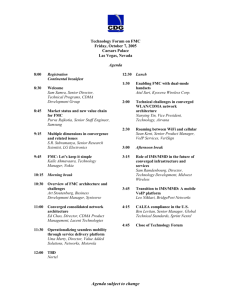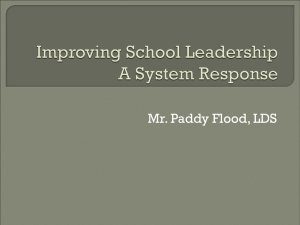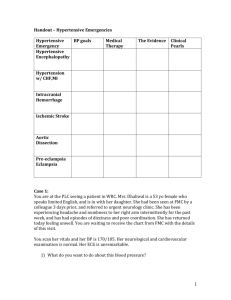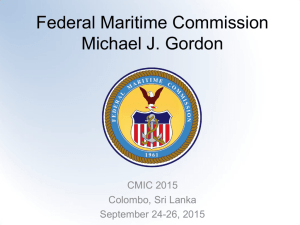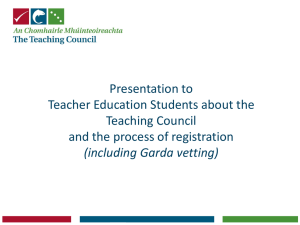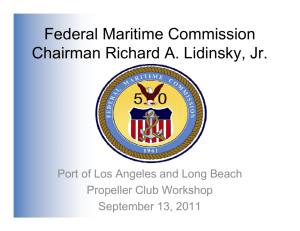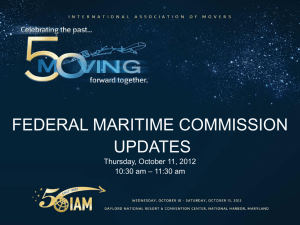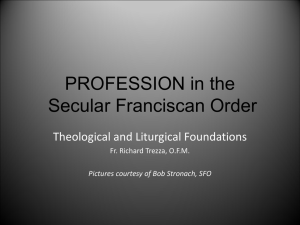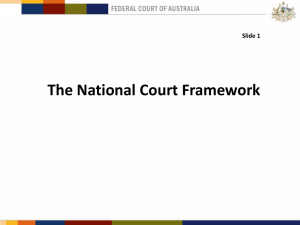Professional self-regulation FMA Annual Conference
advertisement
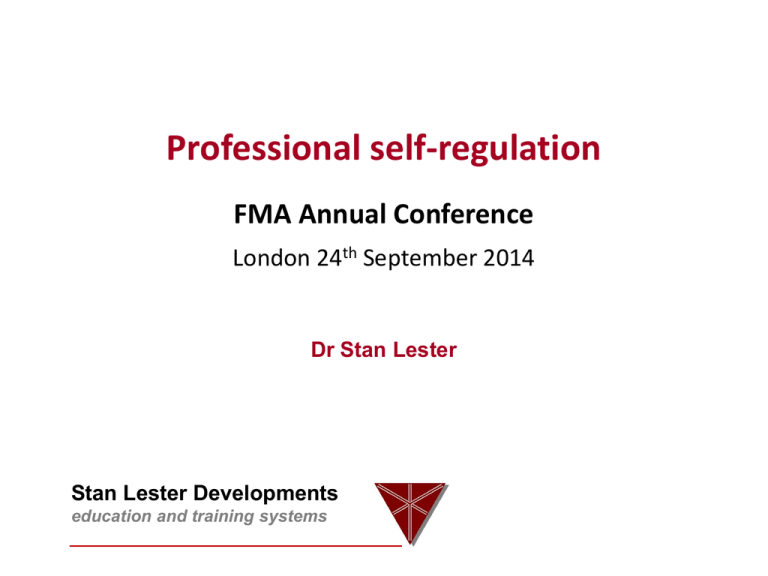
Professional self-regulation FMA Annual Conference London 24th September 2014 Dr Stan Lester Stan Lester Developments education and training systems The beginnings 1969 Divorce Reform Act 1974 Finer Report 1977 Bristol Courts Family Conciliation Service 1981/2 National conference and NFCC (later NFM) 1985 Solicitors in Mediation project 1988 FMA Professional oversight 1996 Family Law Act Legal Aid Board competence requirements 1996/7 UK College of Family Mediators 2002 UK College responsible for APC Mediation Quality Mark for services 2007 UK College disbanded, Family Mediation Council formed as umbrella organisation Competing systems and voices Six membership organisations for less than 2000 people FMC a co-ordinating or debating body? No clear qualified status that can be communicated to the public (or means of revoking it): APC and Law Society assessments for LA work FMA and Resolution accreditation MIAMs-approved status Qualified after completing training? Unsatisfactory, but not an unusual position for emerging professions. Family Justice Review (Norgrove) 2011 Supportive of family mediation Needs to have a minimum qualified standard and appropriate means of oversight Possibility of an independent regulator? Family Justice Review (Norgrove) 2011 Supportive of family mediation Needs to have a minimum qualified standard and appropriate means of oversight Possibility of an independent regulator? Professional regulation in the UK • Archetypal model: self-regulating professional institute • Legal professions: paired membership/regulatory bodies overseen by LSB • Health/social care: independent single- and multiple-profession regulators in areas where there is a ‘significant and proven public risk’ McEldowney review of the FMC 2012 Appropriate body to self-regulate Constitutional reforms Single qualified status and practitioner register Central course approval Ability to strike off defaulting mediators Consistency of standards and processes across MOs McEldowney review of the FMC 2012 FMC appropriate body to self-regulate Constitutional reforms Single qualified status and practitioner register Central course approval Ability to strike off defaulting mediators Consistency of standards and processes across MOs 2013 scoping study also identified issues with CPD, professional/competence standards, PPC responsibilities 2014-15 reform process Professional Standards and Accreditation Board – PSAB Single, revokable qualified status – FMCA Register of practitioners Central course approval to a common standard FMC oversight of PPC standards, complaints and disciplinary procedures Reaccreditation and updated CPD requirements Sensible limits to PPC responsibilities. Questions Compulsion only for MIAMs and legal-aided work – how achieve fully accredited profession? Transitional arrangements for Resolution and FMA accredited mediators without legal aid approval Limited observed assessment Public protection between training and accreditation Endorsements e.g. DCC, abduction? Separate Law Society route. What kind of profession? ‘Secondary profession’ – entered after training and practising in another profession dealing with families ‘Professional function’ – an activity performed by members of another profession? Knowledge-base? Presence in universities, research, practitioner engagement in academic work, journals, conferences? What kind of profession? ‘Secondary profession’ – entered after training and practising in another profession dealing with families ‘Professional function’ – an activity performed by members of another profession? Knowledge-base? Presence in universities, research, practitioner engagement in academic work, journals, conferences? ‘Professions’ All that can be said about a profession is that it requires ‘a formal commitment both to acquiring the relevant knowledge and skills and to the ethos and way of working of the profession, in a way that simply working in an occupation does not’. (Lester S, in RPCE 19(3), 2014) Future organisation of family mediation Status quo? Current structure but more functions delegated to FMC/PSAB? Single self-regulating institute? FMC as regulator with direct registration? External regulator? Who provides professional leadership? PSAB FMC Membership organisations Mediator

